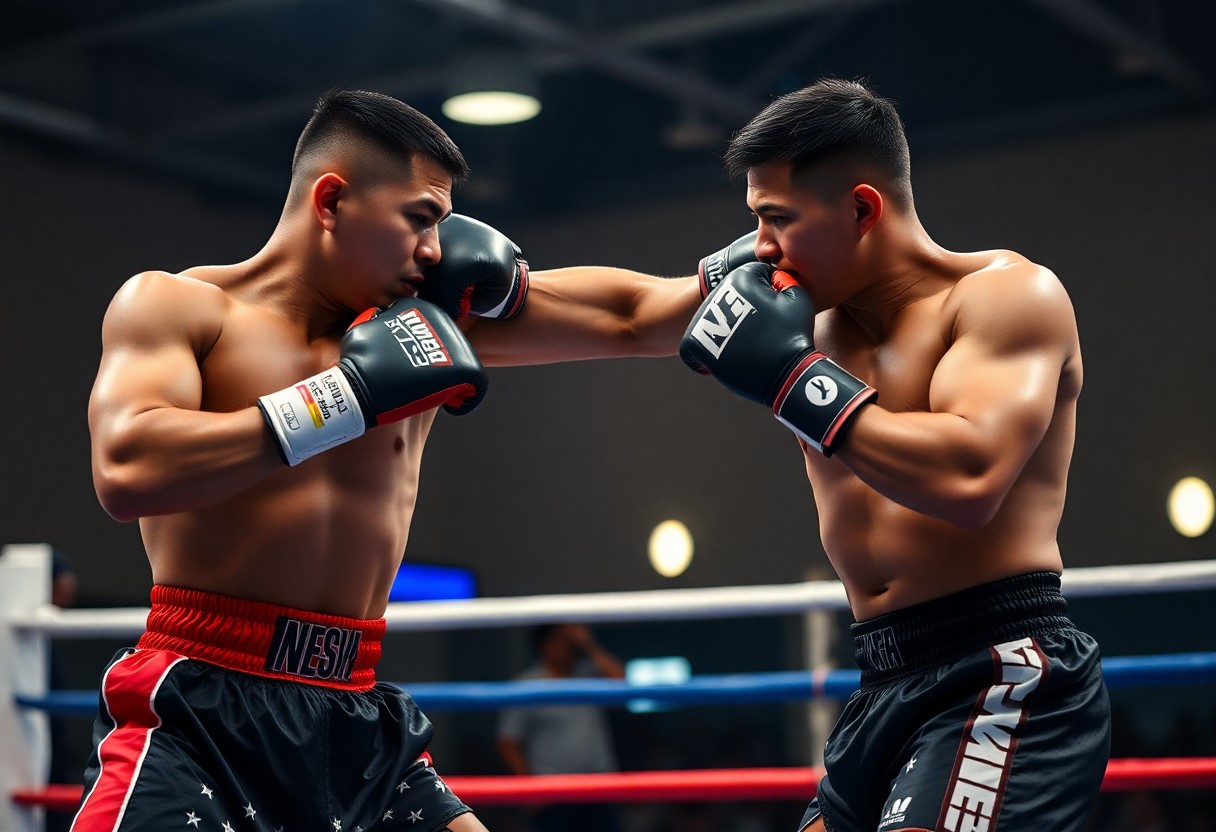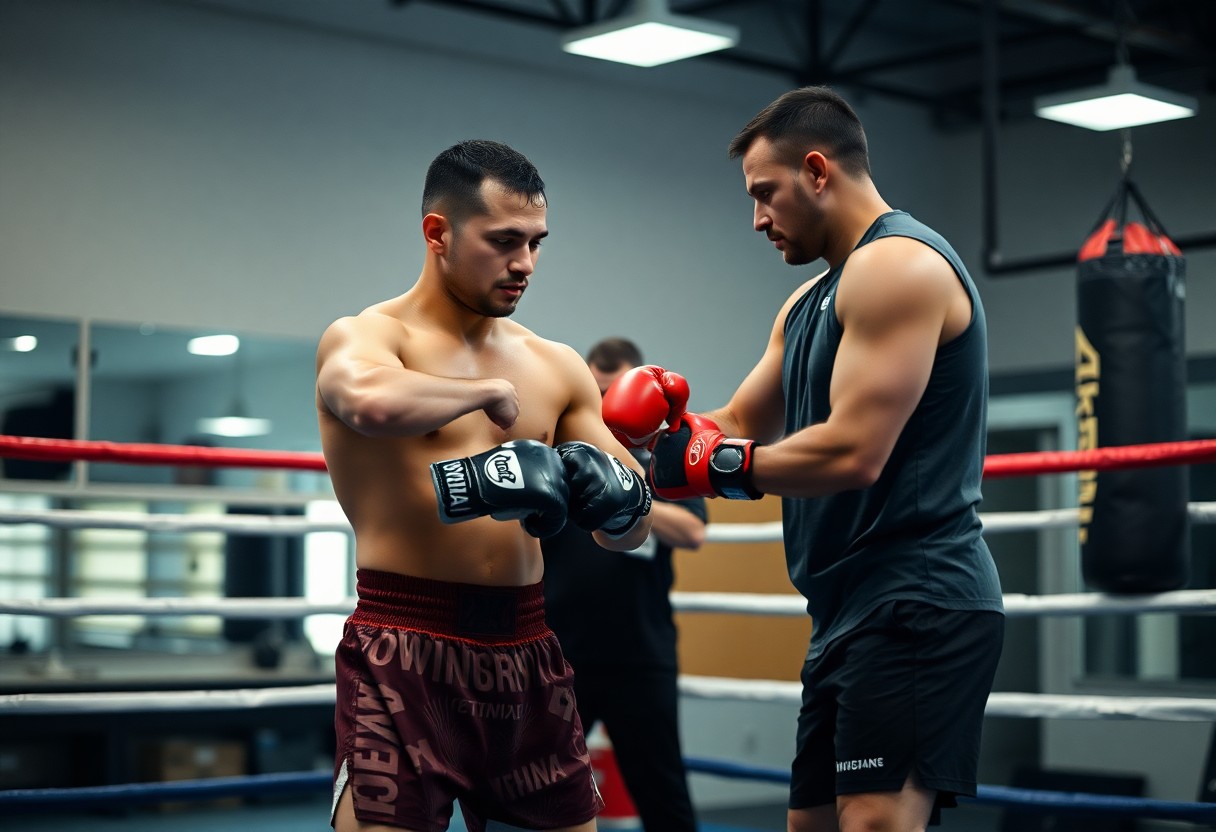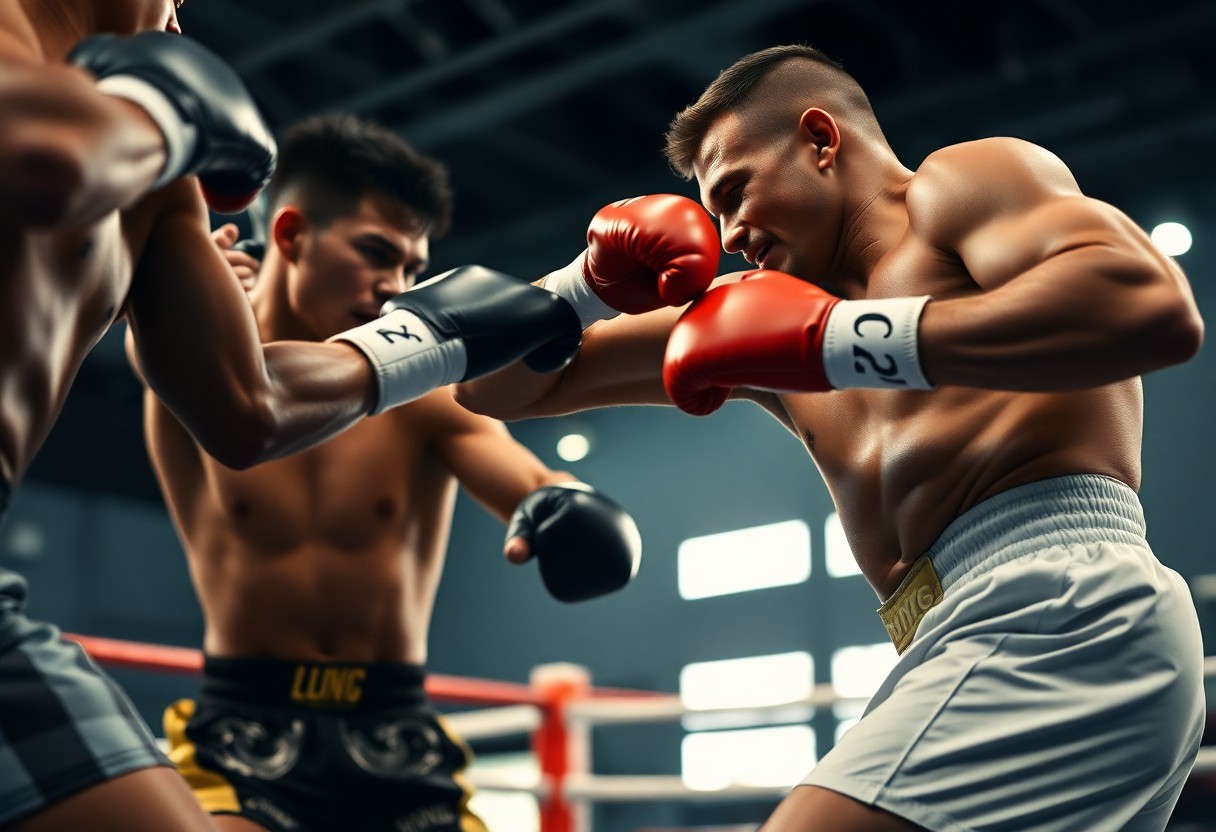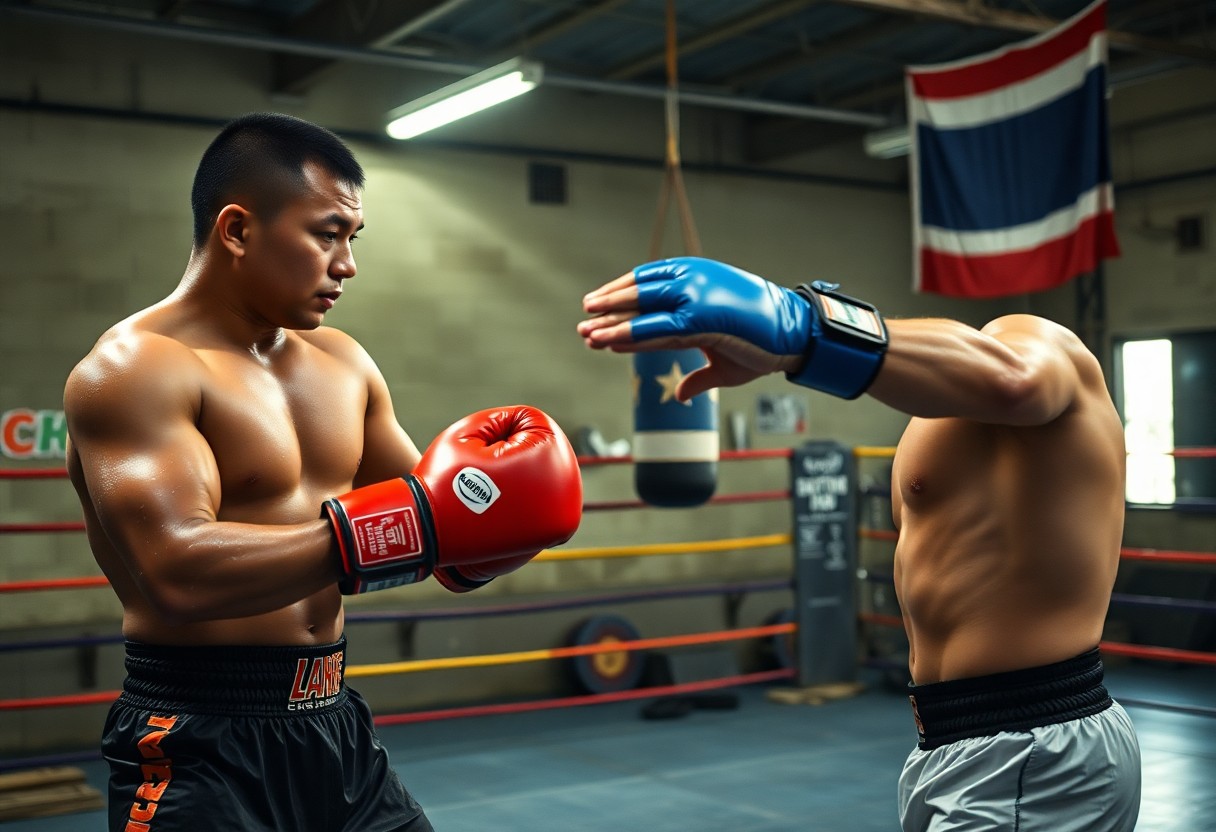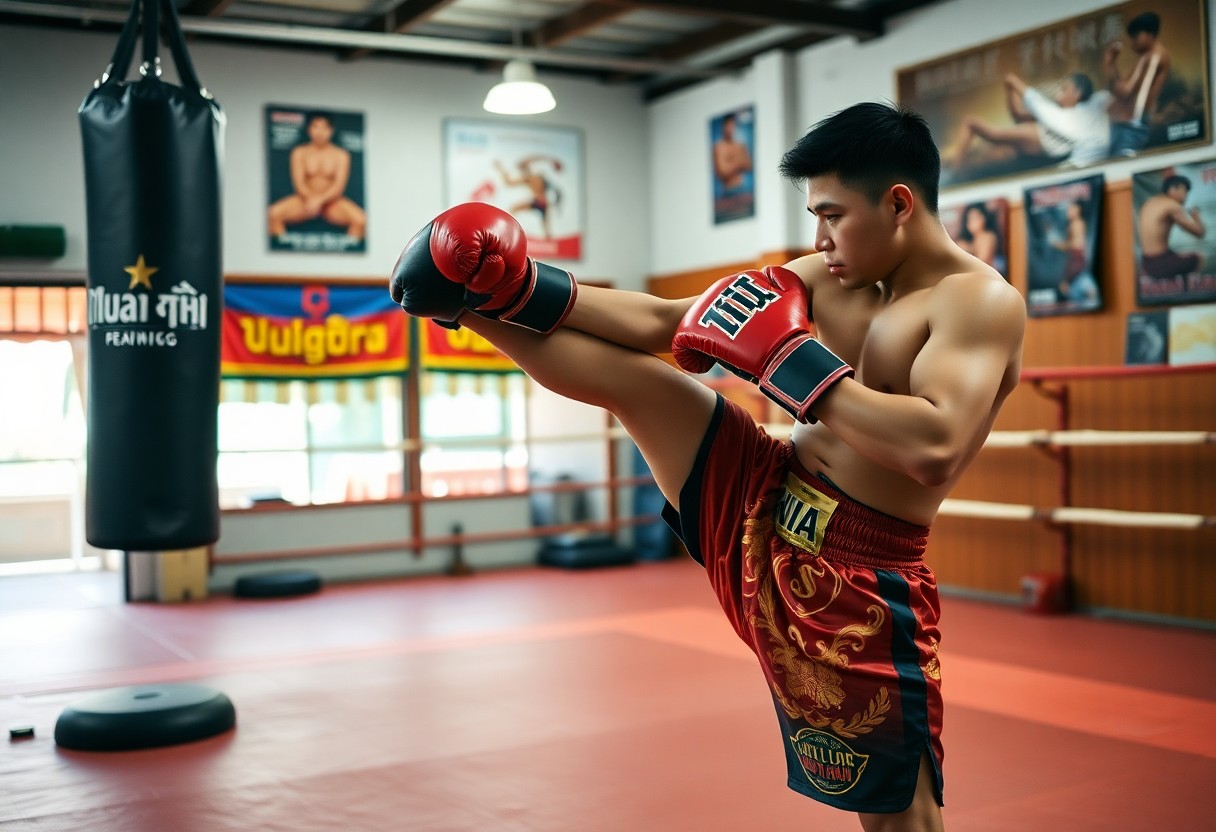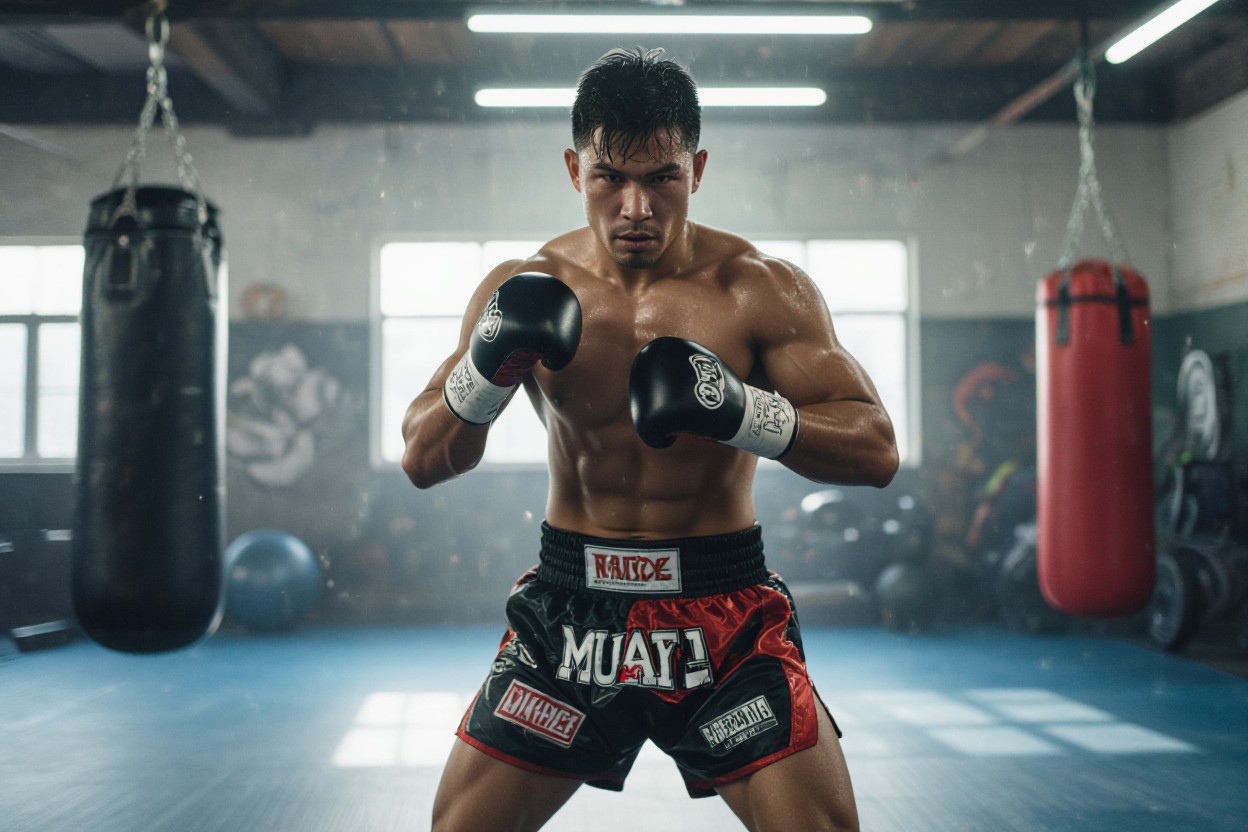
Many fitness enthusiasts are discovering that Muay Thai isn’t just a combat sport – it’s a complete body transformation system. When you step into a Muay Thai gym, you’re not just learning self-defense; you’re begining on a journey that will reshape your body and mind. Your regular training sessions will combine high-intensity cardio, strength training, and dynamic movements that burn up to 1,000 calories per hour. Through consistent practice, you’ll develop lean muscle mass, improve your cardiovascular health, and achieve the kind of functional fitness that traditional gym workouts rarely deliver.
The Biomechanics of Muay Thai: A Full-Body Workout
Muay Thai’s dynamic movements create a comprehensive fitness system that engages your entire body through coordinated striking patterns. Each technique – from roundhouse kicks to elbow strikes – requires precise biomechanical chains that activate muscles from your feet through your core to your shoulders. The sport’s emphasis on explosive power combined with fluid motion develops both strength and mobility, making it an exceptionally efficient full-body workout.
Engaging Multiple Muscle Groups
A single Muay Thai combination activates numerous muscle groups simultaneously. Your leg kicks engage your calves, hamstrings, and glutes, while punching sequences fire up your shoulders, chest, and back muscles. Even basic movements like the Thai stance require constant engagement from your quadriceps and core, resulting in enhanced muscular endurance and improved body coordination.
The Role of Core Strength in Performance
Your core serves as the power center for every Muay Thai technique. The rotational force needed for strikes originates from your midsection, transferring energy from your hips through your upper body. A strong core not only amplifies your striking power but also protects your spine during intense training sessions and sparring.
Training your core through Muay Thai develops functional strength that translates to real-world benefits. The constant twisting motions of kicks and knees strengthen your obliques, while blocking and clinching build deep stabilizing muscles. Your abdominals and lower back muscles become more resilient through the repeated explosive movements and isometric holds required in training, leading to better posture and reduced risk of back pain in daily activities.
Caloric Burn and Endurance: More Than Just a Punch
A typical hour-long Muay Thai session burns between 600-1000 calories, rivaling high-intensity interval training. The combination of explosive movements, sustained cardio periods, and full-body engagement creates an optimal environment for fat burning while building lean muscle mass. Your body continues to burn calories hours after training through the excess post-exercise oxygen consumption (EPOC) effect.
Analyzing Energy Expenditure During Training
During pad work and bag training, your body utilizes both aerobic and anaerobic energy systems. A single round of heavy bag work can spike your heart rate to 85-95% of its maximum, creating intense energy demands. The varied nature of Muay Thai combinations – from quick jabs to powerful kicks – ensures your body never adapts to a single movement pattern, maximizing caloric expenditure throughout your session.
Enhancing Cardiovascular Health Through Training Regimens
Regular Muay Thai practice strengthens your heart through sustained periods of elevated activity. The combination of high-intensity bursts and active recovery periods creates an ideal environment for improving cardiovascular endurance and reducing resting heart rate. Your stamina increases as your body becomes more efficient at oxygen utilization during intense training sessions.
Training sessions typically follow a pyramid structure, starting with lighter techniques and progressively increasing intensity. This approach allows your cardiovascular system to adapt gradually while building endurance. Advanced practitioners often maintain heart rates between 160-180 BPM during intense sparring rounds, leading to significant improvements in VO2 max and overall heart health. The varied nature of combinations and defensive movements ensures your cardiovascular system is challenged in multiple ways, creating comprehensive cardiac benefits.
Mental Resilience: How Martial Arts Cultivate a Strong Mind
Training in martial arts forges mental toughness through consistent exposure to physical and psychological challenges. Each time you push through fatigue, overcome fear, or master a complex technique, your mental resilience grows stronger. The combination of intense physical exertion and tactical thinking creates neural pathways that enhance your ability to handle stress both in and out of the gym.
The Psychological Benefits of Intense Training
Regular martial arts practice triggers the release of endorphins and dopamine, creating natural mood elevation and stress relief. The structured progression of skills gives you measurable achievements to work toward, building self-confidence through tangible results. Studies show martial artists experience reduced anxiety and depression while reporting higher levels of self-esteem compared to practitioners of non-combat sports.
Building Focus and Discipline That Transcend the Gym
The mental discipline required in martial arts naturally extends into daily life. Learning to maintain focus during intense sparring sessions strengthens your ability to stay centered in challenging work situations. The habit of showing up consistently for training, even when motivation is low, develops willpower that carries over into other goals and aspirations.
This enhanced mental discipline manifests in improved work performance, better stress management, and more effective decision-making. Your heightened ability to remain calm under pressure becomes particularly valuable in high-stakes situations. Many practitioners report better sleep quality, increased productivity, and more balanced emotional responses to daily challenges. The mindfulness developed through martial arts training helps you maintain clarity and purpose in all aspects of life.
Practical Applications: Integrating Muay Thai into Your Fitness Regimen
Recommended Training Programs for Beginners
Start with 2-3 sessions per week, focusing on basic techniques and conditioning. Your initial workouts should include 15 minutes of shadowboxing, 20 minutes of bag work, and 15 minutes of pad work with a trainer. Build your foundation with proper stance, footwork, and basic strikes before advancing to complex combinations. After 4-6 weeks, gradually increase training frequency and intensity while maintaining proper form and technique.
Balancing Muay Thai with Traditional Fitness Methods
Combine Muay Thai training with strength and flexibility work to create a well-rounded fitness program. Alternate between Muay Thai sessions and traditional gym workouts to prevent overtraining and enhance overall performance. Your weekly schedule might include two Muay Thai classes, two strength training sessions, and one dedicated mobility workout.
The synergy between Muay Thai and conventional fitness methods amplifies your results. Strength training supports your striking power and clinch work, while yoga or mobility exercises enhance your kick height and recovery time. Cross-training prevents plateaus and reduces the risk of repetitive stress injuries. Schedule your workouts strategically – place intense Muay Thai sessions on days when you’re fresh, and use lighter technical practice to active recovery between strength training days.
The Community Impact: Muay Thai’s Role in Social Connections and Support
Building Relationships Through Shared Goals
Training in Muay Thai naturally creates bonds between practitioners who share the journey of physical and mental growth. Your training partners become your support system, celebrating victories and pushing through challenges together. The shared experience of mastering techniques, preparing for competitions, and overcoming physical barriers creates lasting friendships that extend beyond the gym walls. These relationships often become a cornerstone of your fitness journey, providing motivation and accountability.
The Empowerment of a Supportive Environment
Muay Thai gyms foster an atmosphere where everyone supports each other’s progress, regardless of skill level or experience. Your success becomes the community’s success, creating a positive feedback loop of encouragement and achievement. From beginners to advanced practitioners, everyone plays a role in building this supportive network.
The supportive environment in Muay Thai extends far beyond physical training. Your instructors and training partners offer guidance on nutrition, recovery, and mental preparation. Regular group training sessions create opportunities for knowledge sharing, where experienced practitioners freely share tips and techniques with newcomers. This collaborative atmosphere helps you overcome plateaus, maintain consistency, and develop a deeper understanding of the art. Many practitioners find that the emotional support and camaraderie become as valuable as the physical benefits of training.
Summing up
On the whole, Muay Thai offers you a comprehensive approach to fitness that goes beyond traditional workout routines. By incorporating this martial art into your fitness journey, you’ll experience full-body conditioning through dynamic striking, clinching, and defensive movements. Your cardiovascular endurance will improve significantly, while the high-intensity nature of training accelerates fat burning and muscle development. Whether you’re seeking to enhance your physical capabilities, build mental resilience, or achieve your fitness goals, Muay Thai provides an engaging and effective path to transform your body into its strongest version.

